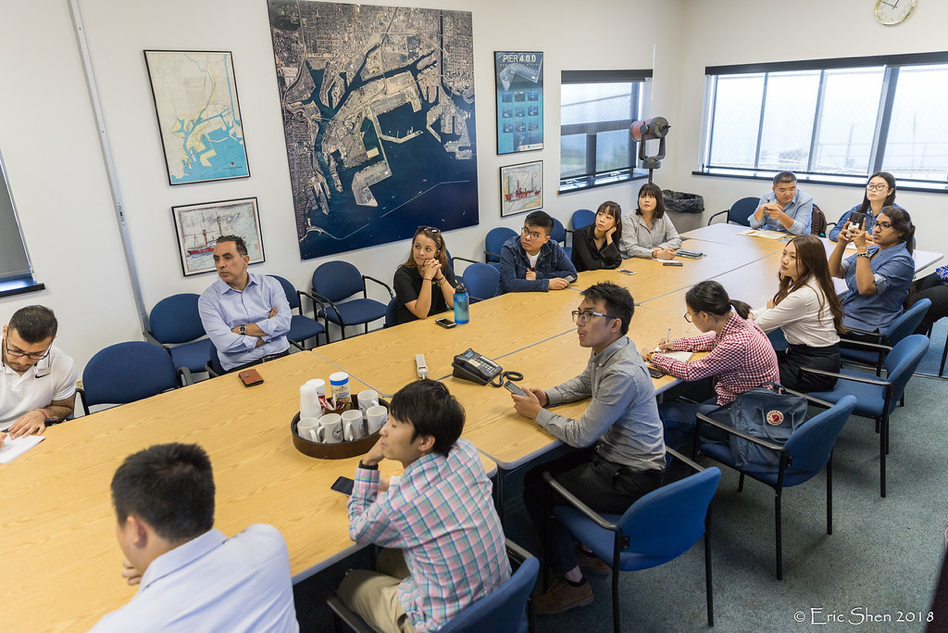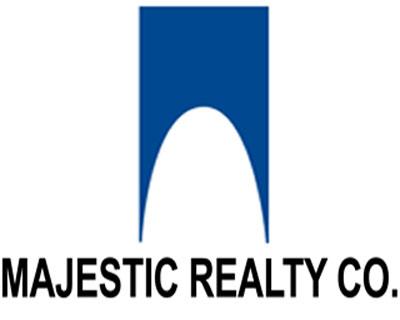News | Transportation Students Tour Eagle Rock Aggregates and Southern California Marine Exchange
Stop the VideoNews

METRANS UTC
Transportation Students Tour Eagle Rock Aggregates and Southern California Marine Exchange
Sunday, October 14, 2018
by By: Jason Cheng, MPL 2020
On Friday, September 21, 2018, USC transportation students from both engineering and planning went on a field trip to observe the business activities of Eagle Rock Aggregates and the Marine Exchange of Southern California.
As a Master of Planning student, I am fascinated by the concept of “smart cities” and how cities can become more optimized and prosperous by integrating new technology into their existing systems. With Los Angeles becoming a hub for new mobility options including e-scooters, electric bikes, autonomous vehicles and (dare we dream it) flying taxis, I realized the importance of understanding how autonomous transportation could drastically change a city so defined by its vehicular-oriented infrastructure and culture. I chose to take the class about Intelligent Transportation Systems with Dr. Shahed Rowshan in order to deepen my knowledge about the subject and gain insights on how autonomous vehicles specifically will affect social and spatial equity in Los Angeles, and was invited this field trip as part of this class.
Eagle Rock Aggregates operates a sand and gravel terminal in Long Beach that receives, stores and distributes the said materials. It serves customers in California and Hawaii for producing concrete for building and construction purposes. In Hawaii, much of the sand is used for beach restoration purposes. Much of its sand and gravel comes from the Orca Quarry in British Columbia in Canada.

During the tour, we saw the processing of raw materials that form our buildings and infrastructure. We learned about how sand, rock, and gravel are used to create high strength concrete aggregate for the company’s customers. The Eagle Rock Aggregate representative shared that the ships carrying the materials to Long Beach could carry up to 76,000 tons, while taking approximately 30 hours to discharge all materials on land. Companies place their orders in advance and send trucks to the site to bring the materials to ready-mixing plants. Eagle Rock Aggregate’s product is especially valuable because the rocks have rounded corners, which cause them to have a very firm bond when creating cement powder. Overall, the form, surface condition and density of Eagle Rock Aggregates’ materials distinguish it among its competitors such as Vulcan. Its product is more expensive, but less expensive versions include additives to their materials to compensate for the lower quality, while creating higher greenhouse gas emissions during the refining process.
The Marine Exchange of Southern California is a non-profit organization that facilitates the efficient flow of maritime commerce through its 24-hour service and records of ship arrivals and exits. Its Vessel Traffic Service is a public-private partnership with the US Coast Guard that helps it provide real time ship locations and routes within its 25-mile radius of operation. During the tour, we were given a presentation about the history of the organization, and saw the control center where the Vessel Traffic Service was carried out. We observed how the ships entered and exited the port, how the control center kept track of each of the ship’s routes through maritime information services and coordinated scheduled entries and exits with new ships coming in and out the port. In terms of ship traffic, we learned that containers take up 45% of ships that come in, tankers take up 16%, and bunkers take up 10% of traffic.

The Marine Exchange is an essential part of the Port of Los Angeles and the Port of Long Beach, as it helps to direct the ships carrying over $1 billion worth of goods and services to and from the US. Half of the country’s imports and half of California’s oil comes through both ports, which underscores how important the Marine Exchange’s work is. We also heard about the challenges that the Marine Exchange faces on a regular basis. For one, deep draft tankers are getting larger, which makes it more difficult to direct them into the port. Narrow channels can also cause problems, and overall bad weather and tight scheduling leaves little room for error.
About the Author:
Jason Cheng is a Master of Planning student at USC. Originally from Hong Kong, he graduated from USC Annenberg with a degree in journalism in 2017. He is passionate about using human-centered design to create innovative solutions for urban issues and shaping the new age of citizen-centered smart cities.
News Archive
- December (1)
- November (6)
- October (4)
- September (2)
- August (3)
- July (4)
- June (3)
- May (7)
- April (8)
- March (11)
- February (8)
- January (7)
- December (7)
- November (8)
- October (11)
- September (11)
- August (4)
- July (10)
- June (9)
- May (2)
- April (12)
- March (8)
- February (7)
- January (11)
- December (11)
- November (5)
- October (16)
- September (7)
- August (5)
- July (13)
- June (5)
- May (5)
- April (7)
- March (5)
- February (3)
- January (4)
- December (4)
- November (5)
- October (5)
- September (4)
- August (4)
- July (6)
- June (8)
- May (4)
- April (6)
- March (6)
- February (7)
- January (7)
- December (8)
- November (8)
- October (8)
- September (15)
- August (5)
- July (6)
- June (7)
- May (5)
- April (8)
- March (7)
- February (10)
- January (12)















